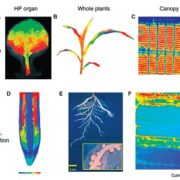
Review: Plant phenomics, from sensors to knowledge ($)
Blog, Plant Science Research Weekly, Research, Research Blog
Plants adapt their form, function and metabolism to the surrounding environment. According to Tardieu et al., understanding the plant phenome requires that plant phenotypes to be studied on different spatial and temporal scales. High precision platforms are instrumental for discovery of new physiological…
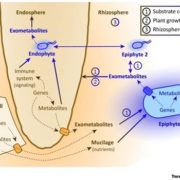
Review. Feed your friends: Do plant exudates shape the root microbiome? ($)
Blog, Plant Science Research Weekly, Research, Research BlogA wide variety of beneficial and pathogenic microbes surrounds plants both below and above ground. This microbial diversity is shaped by different biotic and abiotic factors and plays a role in maintaining plant health in natural settings. Hence, it is vital to understand the influence of different factors…
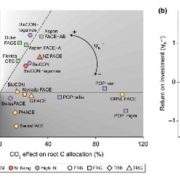
Ecosystem responses to elevated CO2 are governed by plant-soil interactions and the cost of nitrogen acquisition
Blog, Careers, Plant Science Research Weekly, Research, Research BlogHow does the cost of nitrogen acquisition affect how an ecosystem responds to elevated CO2? Terrer et al. have addressed this question in a comprehensive review of findings from elevated CO2 experiments, using a plant economics framework. The authors describe ecosystem responses, particularly those of…

End the Year with a New Career - November 16, 2017
Blog, Careers, Careers - Blog
ASPB and Plantae have already set a tone of collaboration and constant improvement by and for plant scientists. In keeping with our commitment to providing the best recruitment resources for our members, we are excited to announce the launch of our new and expanded online employment resource: the…
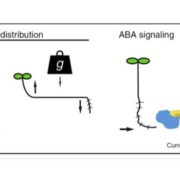
Review: Growth-mediated plant movements: hidden in plain sight ($)
Blog, Plant Science Research Weekly, Research, Research BlogTime-lapse imaging reveals the slow movements of plants, such as phototropism and gravitropism. Harmer and Brooks review the molecular bases for these growth-mediated movements. While auxin has long been known to be involved in photo- and gravitropisms, new results show that ABA is involved in the movement…
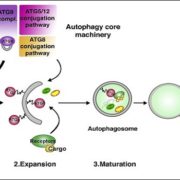
Review: Autophagy as a mediator of life and death in plants ($)
Blog, Plant Science Research Weekly, Research, Research BlogAutophagy is a major pathway involved in degradation and recycling of the cytoplasmic components in a cell. This pathway is functionally well conserved in maintaining cellular homeostasis and modulation of stress responses among yeast, plants and animals. Recent evidence suggests that autophagy targets…
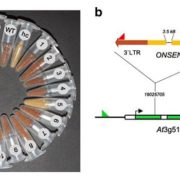
Inhibition of RNA polymerase II allows controlled mobilization of retrotransposons for plant breeding
Blog, Plant Science Research Weekly, Research, Research BlogThe lack of acceptance of GM-breeding calls for alternative strategies to develop new crop varieties to feed the world's growing population. Moreover, the regulation of novel approaches for genome editing (CRISPR, TALEN) is still unclear and will potentially remain so for the near future (or will likely…
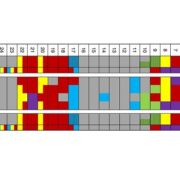
Recombination between members of Onsen family
Blog, Plant Science Research Weekly, Research, Research BlogPlant genomes are largely remnants of transposons of varying ages, some of which are presumed to be no longer capable of transposition. Sanchez et al. examined the family of Onsen retrotransposons to determine which members retain activity. They prompted transposition through heat treatment in a mutant…
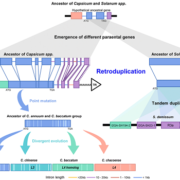
Amplification of plant disease-resistance genes in pepper is intimately linked to transposon activity
Blog, Plant Science Research Weekly, Research, Research BlogPeppers are an economically and ecologically important crop plants, but genomic resources are rather scarce. The authors provide here new reference genome sequences for three species of hot pepper (Capsicum baccatum, C. chinense and C. annuum), identifying evolutionary forces that have shaped pepper…

